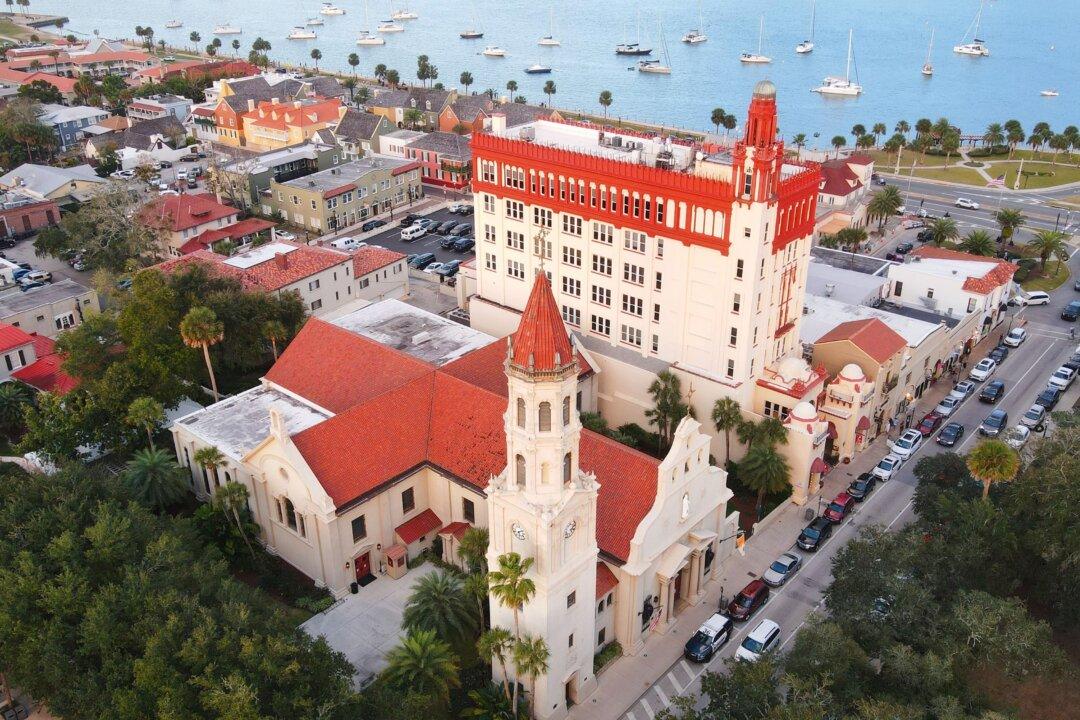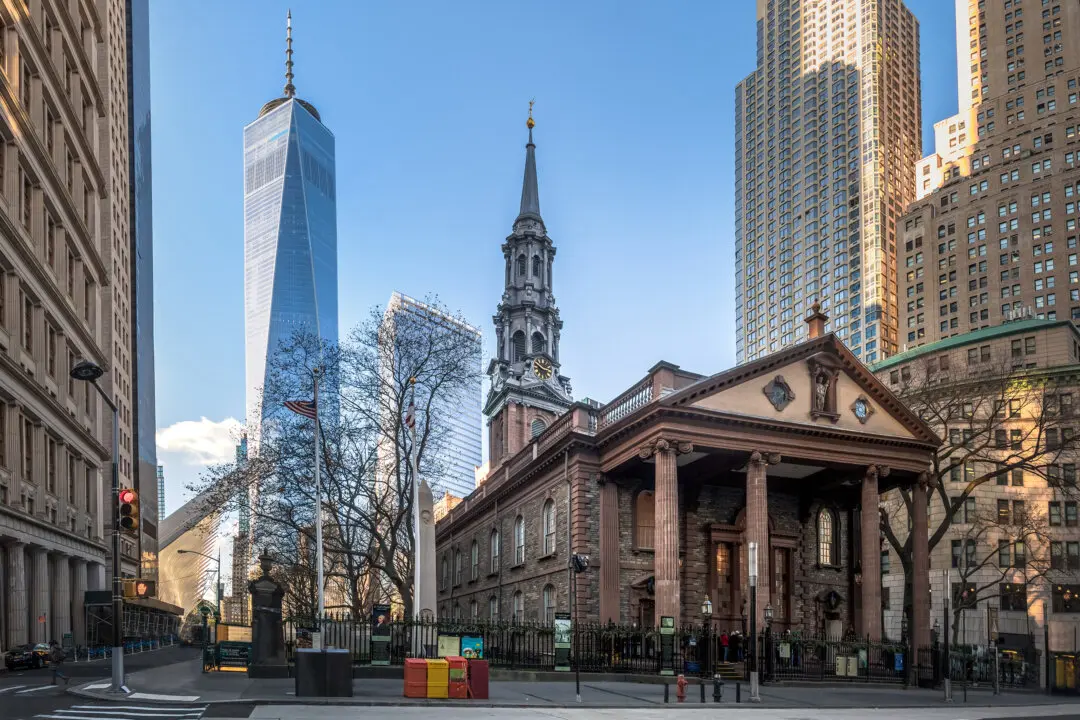St. Augustine, Florida, is referred to as the “Ancient City” because it was founded a few hundred years before the United States was even a country. Interspersed with cobblestone streets and historic homes, the city boasts an austere 17th-century fortress and a grandiose basilica. While the congregation of the Basilica of St. Augustine was established when the town was founded in the 1500s—becoming the country’s first Catholic parish—the current church structures were constructed in the late 1700s and 1800s.
The basilica was designed between 1789 and 1793 by Spain’s royal engineer Mariano de la Rocque. The original part of the church was completed in 1797. Early Spanish settlers and leadership in St. Augustine influenced the basilica’s Spanish mission architectural style. In 19th-century expansion efforts, Renaissance designs were prominent, especially in the added bell tower. Common Spanish mission architectural elements include the curvilinear gables and arched openings for bells and statues, while the Renaissance style focused on symmetry and classical components, namely columns and pediments.





